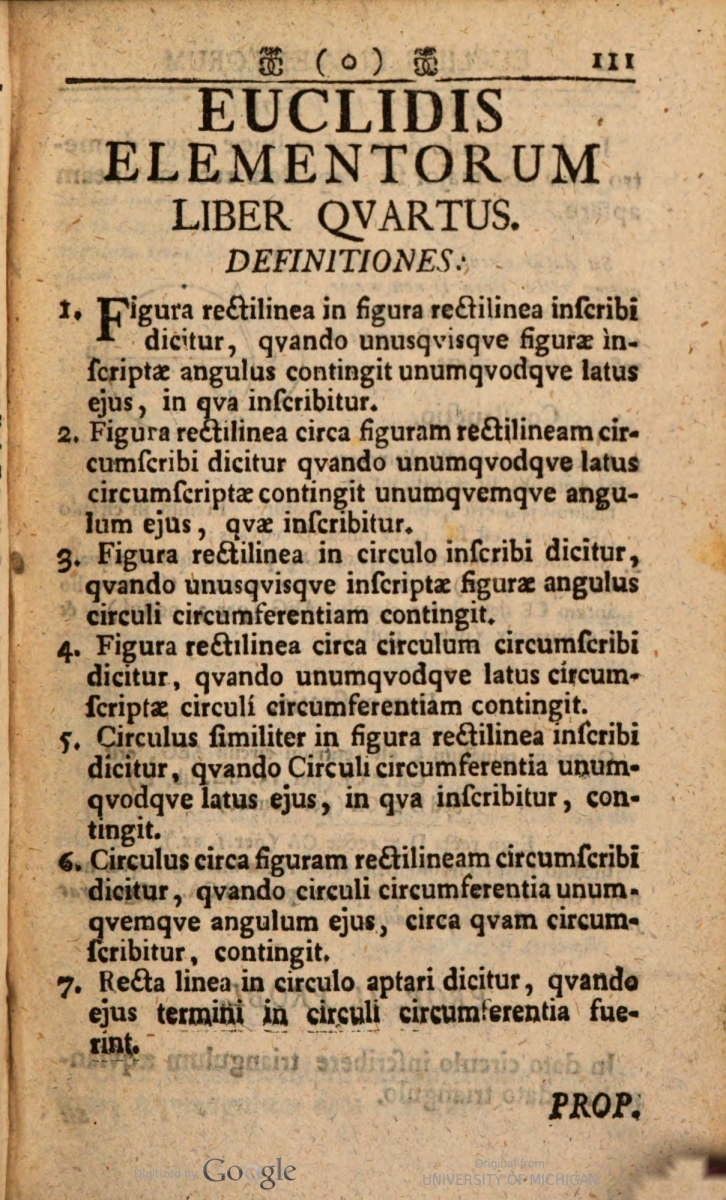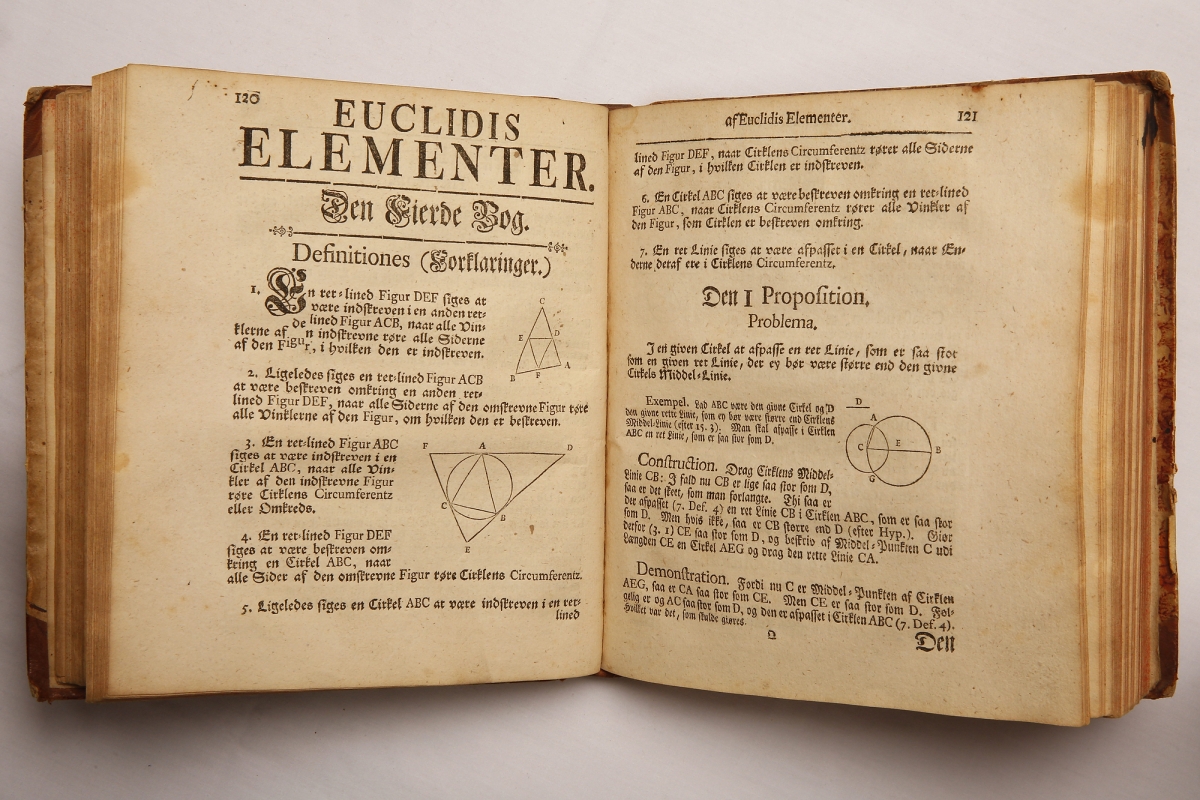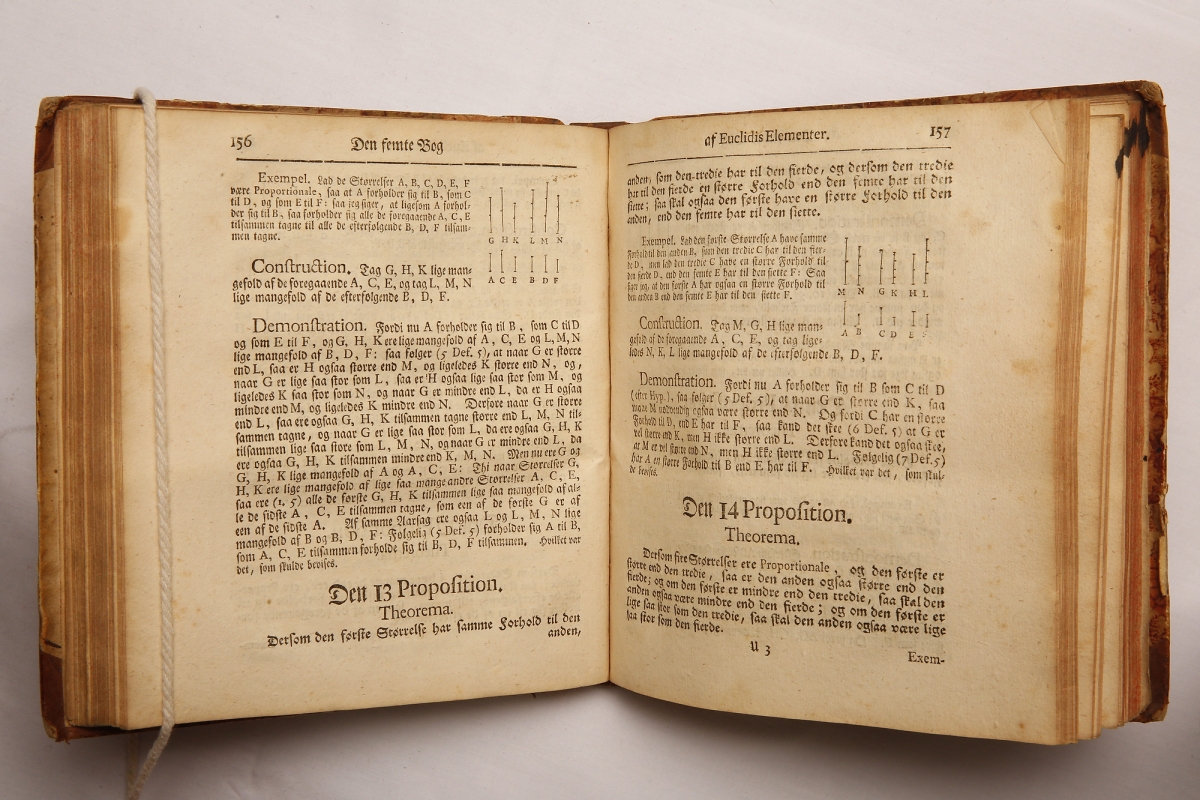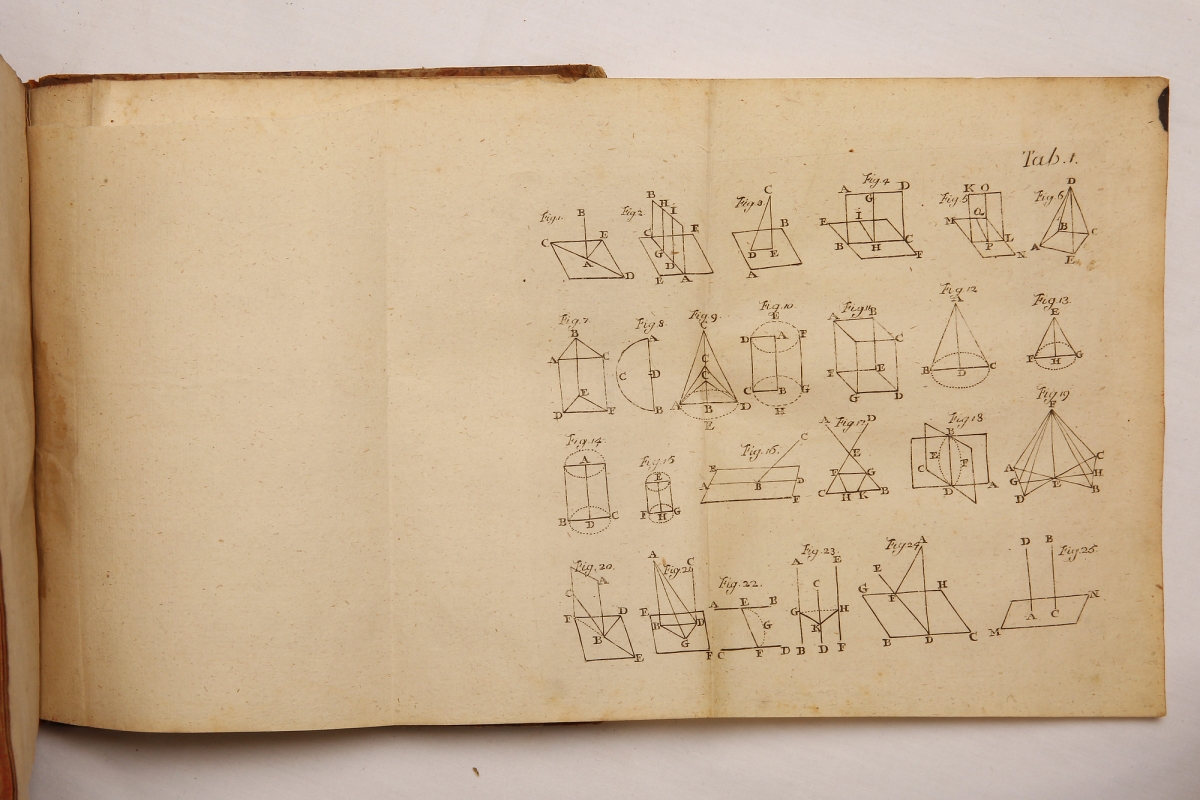- About MAA
- Membership
- MAA Publications
- Periodicals
- Blogs
- MAA Book Series
- MAA Press (an imprint of the AMS)
- MAA Notes
- MAA Reviews
- Mathematical Communication
- Information for Libraries
- Author Resources
- Advertise with MAA
- Meetings
- Competitions
- Programs
- Communities
- MAA Sections
- SIGMAA
- MAA Connect
- Students
- MAA Awards
- Awards Booklets
- Writing Awards
- Teaching Awards
- Service Awards
- Research Awards
- Lecture Awards
- Putnam Competition Individual and Team Winners
- D. E. Shaw Group AMC 8 Awards & Certificates
- Maryam Mirzakhani AMC 10 A Awards & Certificates
- Two Sigma AMC 10 B Awards & Certificates
- Jane Street AMC 12 A Awards & Certificates
- Akamai AMC 12 B Awards & Certificates
- High School Teachers
- News
You are here
E. G. Ziegenbalg’s Danish Translation of Euclid’s Elements: The Translation’s Structure and Source Material
Euclidis elementa geometriæ, which Ziegenbalg dedicated to King Christian VI of Denmark–Norway, is a beautiful book. Glunk et al. [2021, 45] notes that the book’s layout bears witness to an expensive production with a clear organization of the text: for each proposition, the book’s typography keeps the statement of the proposition, the example, the demonstration, and the conclusion separate, and places the figure where it can be easily referenced by the reader (see, for example, Figure 8 below, where the figure for proposition 1.47, which spans two pages, is printed on both pages). This distinctive formatting style is, in fact, due to Ramus, and will be discussed in the next section. The book measures 17.5 cm by 19.5 cm, and has a convenient size and weight for being easily carried around by a student. As noted by Glunk et al. [2021, 45], as was typical for the time, the book has a Latin title, which is explained in Danish in the subtitle, but otherwise the entire book is in Danish.
The book contains the following:
- A preface by Ziegenbalg, 3 unpaginated pages.
- An introduction by J. F. Ramus, 6 unpaginated pages.
- An introduction by Ziegenbalg, paginated 1–19 (first page unpaginated).
- A page of errata, unpaginated.
- The Danish translation of Books 1–6 and 11–12 of the Elements, paginated 1–311 (first page unpaginated).
- Five fold-out plates with geometrical diagrams.
The eight books translated by Ziegenbalg cover plane geometry (Book 1–4), ratio and proportion (Book 5), application of proportions to plane geometry (Book 6), and basic solid geometry (Books 11–12).
Figure 2. Ziegenbalg’s dedication to King Christian VI of Denmark–Norway.
Ziegenbalg does not tell his readers which edition of the Elements his Danish translation is based on, but it is likely Ramus’ Latin edition from 1740 for Books 1–6. Ramus published two Latin editions of Books 1–6 of the Elements: one in 1737, entitled Elementa geometriæ VI prioribus libris Euclidis comprehensa [Ramus 1737], and another in 1740, entitled Euclidis elementa geometriæ planæ libris VI comprehensa [Ramus 1740]. The latter, which appeared in a second edition in 1756 [Ramus 1756], was meant for school use. Christensen [1895, 97] notes that Ziegenbalg’s translation was used as a textbook at the University of Copenhagen, so it is reasonable to assume that it was based on his mentor’s edition aimed at school use. (Christensen [1895, 42] notes also that Ziegenbalg’s translation of Euclid was written as much for teachers as for students.) There are differences between Ramus’ 1756 edition and Ziegenbalg’s translation, however.[12] To give an example, Figure 3 shows that Ziegenbalg includes figures for Definitions 4.1 and 4.3 that are not found in [Ramus 1756].
Figure 3. The definitions of Book 4 in Ramus 1756 (top, from HathiTrust) and Ziegenbalg 1744 (bottom).
Books 11–12 are not included in any of Ramus’ editions. Ziegenbalg could have used Gregory [1703] or Tacquet [1722] for his translation of these two books; the former was used by Ramus for his 1740 edition [Christensen 1895, 40], and Ziegenbalg mentions the latter explicitly in the introduction to his translation of the Elements. (For more on Ziegenbalg’s use of Tacquet, see below.) Ramus’ distinctive formatting style for proofs (see below) is followed throughout the translation, including in Books 11–12 (it is not used by Gregory or Tacquet).
Figure 4. Proposition 13 of Book 5.
Figure 5. Fold-out plate with figures.
[12] Unfortunately, I have not been able to inspect a copy of [Ramus 1740].
Toke Lindegaard Knudsen (State University of New York at Oneonta), "E. G. Ziegenbalg’s Danish Translation of Euclid’s Elements: The Translation’s Structure and Source Material," Convergence (October 2021)









